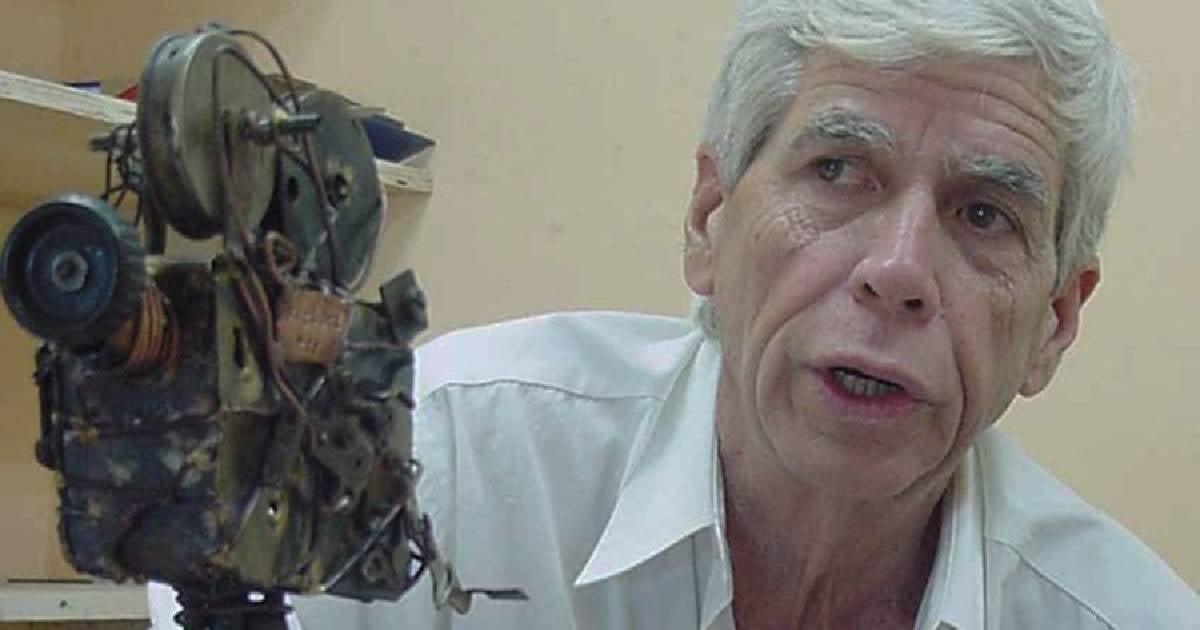While "Lucía" (1968) stands as the solitary restored film by renowned Cuban filmmaker Humberto Solás (1941-2008), the remainder of his cinematic contributions face the peril of irreversible loss due to physical degradation, absence of digital preservation, and the seeming apathy of Cuban cultural authorities. Solás, a pivotal figure in Cuban and Latin American cinema, sees much of his work under threat, mirroring the challenges confronting a significant portion of Cuba's film and audiovisual heritage: resource scarcity for preservation compounded by unstable temperatures and humidity.
This critical situation was highlighted by Sergio Benvenuto Solás, head of the Gibara International Low-Budget Film Festival (FICG). He warned that Cuba's audiovisual heritage is currently in a state of “high risk.” Benvenuto emphasized the necessity for a comprehensive strategy to preserve Solás’s films physically and to promote their cultural significance, as noted in a piece by the IPS news agency.
Comprehensive Strategies for Preservation
Benvenuto, who is also Solás's nephew and the director behind other notable films such as "Cecilia" (1982) and "A Successful Man" (1986), advocates for a unified cataloging system. This system should encompass not only films but also supplementary materials like unpublished scripts, critical texts, awards, and costume designs. He stressed that this cataloging effort must be supported by official policies and collaborations with international institutions that recognize Cuban cinema as cultural heritage.
Implementing such a vast undertaking would not only safeguard Solás's legacy but also offer a unique chance to renew interest in Cuba's audiovisual heritage, Benvenuto asserted. He noted that while Cuban cinema is acknowledged as a leading movement in Latin America, its film archives silently deteriorate.
The Broader Context of Preservation Challenges
Benvenuto underlined the importance of cataloging and declaring all preserved materials—whether in cinematheques, archives, or collections, public or private, domestic or international—as cultural heritage. Recognizing the historical and cultural value of unclassified works still in archives is crucial for preserving the nation's collective memory.
He urged the creation of a unified cataloging system for existing materials in Cuba, with a pioneering start on the archives of the Cuban Institute of Cinematographic Art and Industry (ICAIC). Additionally, he proposed consolidating information from various national archives and tracking Cuban audiovisual materials preserved in countries with better preservation conditions.
Such an initiative, he suggested, could become a preservation model for Cuban cinema, facilitating the collection of valuable information and offering opportunities to restore works by other filmmakers.
Technological and Ethical Considerations
According to Benvenuto, Artificial Intelligence could open new doors for restoration, allowing the identification, classification, and recovery of audiovisual works. Although digitizing in 4K or 6K remains expensive, 2K digitizations already enable cinema and digital platform screenings.
This technology, however, raises ethical and technical debates on how much a work can be intervened without altering its essence. Time is of the essence, not only for the films but also for the professionals who can provide context before their insights are lost.
Implementing these measures, Benvenuto concluded, would effectively embrace Humberto Solás's legacy to launch a large-scale cultural project that addresses the neglect his work currently faces. It would also be a first step in mitigating the risks threatening the rest of Cuba's audiovisual heritage.
Legacy of the Gibara Festival and the Impact of "Poor Cinema"
Solás’s final films, "Honey for Oshún" (2002) and "Barrio Cuba" (2005), were produced with limited budgets, digital technology, and the frugality characteristic of so-called "poor cinema"—a term referring to economically constrained filmmaking in both developing countries and economically dominant societies.
Under the "Poor Cinema Manifesto" initiated by Solás, the FICG was born, with Solás at its helm from its inception in 2003 until his death in 2008. The 19th edition was held between the 15th and 19th of this month in the coastal city of Holguín, featuring over 500 audiovisual materials from about 30 countries, reviving its foundational spirit.
In 2017, the festival expanded, accepting films of all budgets to further internationalize the event. After a hiatus due to the COVID-19 pandemic, the festival resumed in 2022 in a more modest format amid Cuba's deepening economic crisis, which has led to the decline of the country's film industry.
Preserving Cuban Cinema: Key Questions Answered
Why is Humberto Solás's work at risk?
Solás's films are at risk due to physical deterioration, lack of digital preservation, and neglect by Cuban cultural authorities.
What measures are proposed to preserve Solás's films?
A comprehensive strategy is suggested, including a unified cataloging system and international collaboration to recognize and preserve Cuban cinema as cultural heritage.
How does Artificial Intelligence contribute to film restoration?
AI can facilitate the identification, classification, and recovery of audiovisual works, although ethical and technical challenges remain regarding its use.
